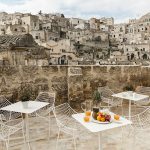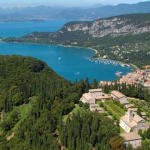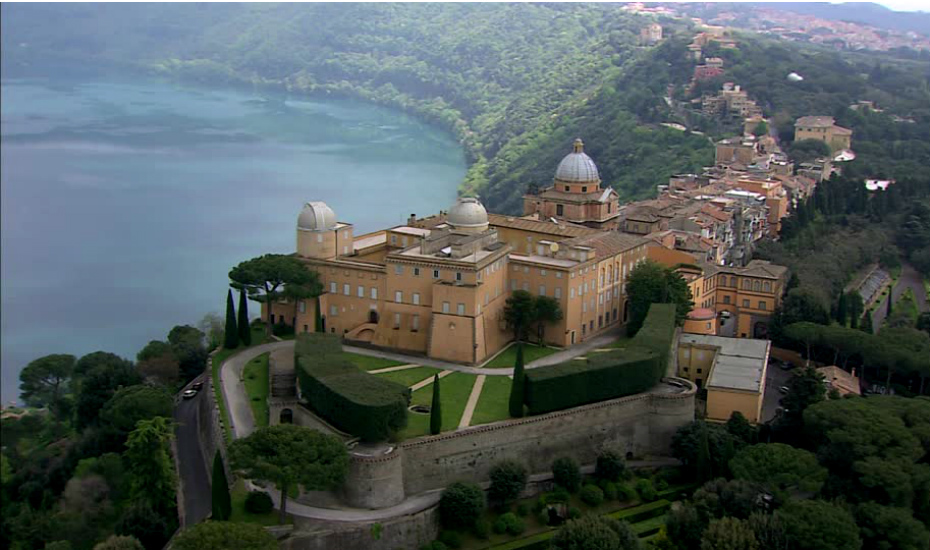
27 Nov 2019 The lakes above Rome that were once volcanoes
Lazio is often assimilated with Rome which is the capital of this region in the center of Italy. Nevertheless in addition to being the land of the ancient Roman civilization, Lazio can also claim unsuspected supremacies. For example, few people know that Lazio is the land of lakes, possessing a higher number of them than all the other Italian regions: from coastal to volcanic lakes, from artificial basins to glacial lakes, from spring water and karstic lakes to marsh and residual ones.
Rome (and even earlier, the Etruscan civilization) owes a lot to this land that is so rich in both river and lake water reserves that have facilitated inhabited settlements since ancient times.
However, going back to the lakes, Lazio can actually boast a European supremacy with regard to volcanic lakes: i.e., lakes that have formed in the craters of volcanoes that are now extinct.
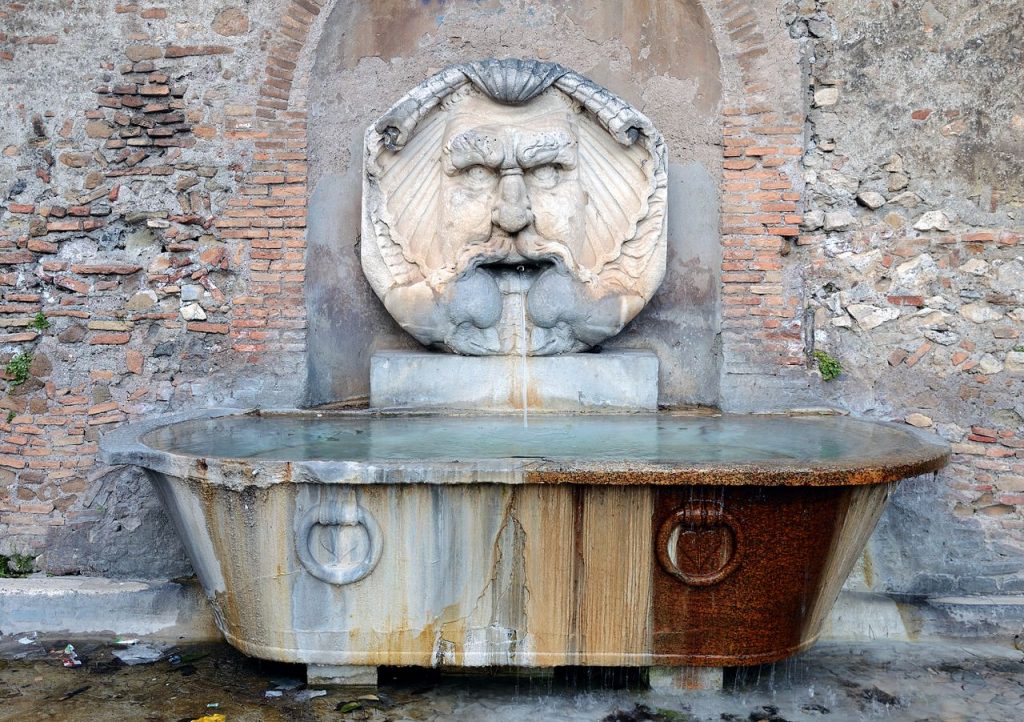
Rome, Fontana del Mascherone
The region has four volcanic groups: Laziale, Sabatino, Cimino-Vicano, Vulsini, each one of which has given rise to a certain number of lakes. While the lakes in the Alban Hills, i.e. those of Castel Gandolfo and Nemi, nearer to Rome, offer a mainly wooded and in some places rugged landscape, most of the lakes in Upper Lazio instead display a landscape made up of gentle hills that are cultivated or given over to pasture: this is the case of the lakes of Bolsena and Bracciano and of the small but enchanting basins of Martignano, Monterosi and Mezzano. Lake Vico on the Cimini Hills which, due to its particular characteristics, is a nature reserve and protected area, can be placed between these two typologies.
Let’s take a look at Upper Lazio.
Lake Bolsena, a European record
Lake Bolsena is the biggest lake of volcanic origin in Europe, in fact it was formed by the break up of the Vulsini volcanic complex which, as a result of volcanic eruptions, was emptied and then collapsed in on itself forming an enormous caldera (a large hollow which forms in the ground in correspondence with volcanic lakes) that slowly filled with water. It is located in Upper Lazio, on the border with Umbria and Tuscany, and is one of the few Italian lakes in which it is possible to swim. It has two islands: Bisentina and Martana.

Lake Bolsena, the biggest lake of volcanic origin in Europe.
Around these lakes today it is still possible to admire the extraordinary evidence of the glorious past which, in the XVI and XVII centuries, gave life to the dominions of the Farnese, Orsini and Lante-Della Rovere. Another interesting detail is that the history of these places, during and after the Renaissance, is marked by the presence of the Popes: from Pius II Piccolomini, to Sixtus IV Francesco della Rovere, from Innocent VIII Giovan Battista Cibo to Alexander VI Rodrigo Borgia, from Julius II Giuliano della Rovere to Leo X Giovanni de Medici, to Clement VII Giuliano de Medici.
Discover the most beautiful villas in Lazio

Montefiascone
A wine worthy of emperors at Montefiascone
Not just Popes, but also traces of temporal power.
In fact, by following the panoramic road in a clockwise direction and proceeding beyond Bolsena, the small town after which the lake is named with its perfectly preserved medieval district, we come to Montefiascone, a town which is famous not only for its excellent geographic position (from its height of six hundred meters it dominates the whole of the lake), but also and, above all, for the production of Est!Est!!Est!!!: a dry, white wine with a pleasant fruity aroma. It is interesting to discover the origin of its name. The story goes that in 1111 a Flemish prelate called Johannes Defuk was traveling in Italy as part of the retinue of Henry V, emperor of Germany, who was going to Rome where he was to be crowned Emperor of the Holy Roman Empire by Pope Paschal II.

Defuk liked good wine and in order to be sure to taste only the “best” of the Italian production he arranged to be preceded by a couple of days along his route by his faithful servant and cupbearer Martino who carried out a reconnaissance of the area before his master arrived. Wherever the servant Martino found good wine he left the words “Est!” written on the door of the inn. In Latin “Est!” means “There is!” which meant “there is good wine”. Martino thought the wine he tasted in Montefiascone was so good that to write just one “Est!” was not enough: so he wrote it three times, also exaggerating the exclamation marks (of which there were six). In honor of this tradition, in the month of August Montefiascone hosts an important Wine Fair displaying and selling the best products of the whole district: in addition to the already mentioned “Est! Est! Est!”, it is possible to taste the Aleatico di Gradoli and the Cannaiola di Marta. A series of events is held during the Fair including “In Cantina con Defuk” a food and wine itinerary around the old wineries. Moreover there is also an Historic Procession in which the legend of the Est!Est!!Est!!! wine is reenacted.
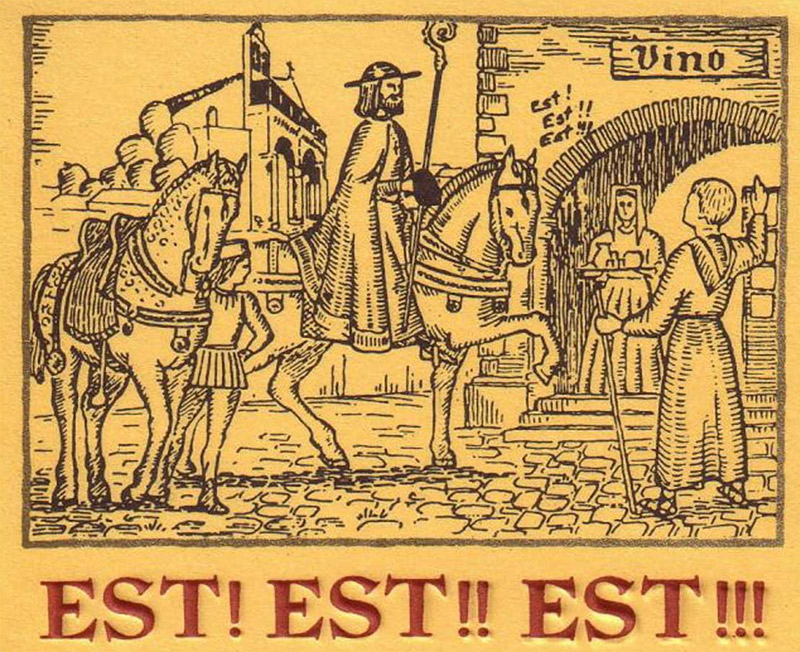
Est!Est!!Est!!!: a dry, white wine with a pleasant fruity aroma.
Martana and Queen Amalassunta
Leaving Montefiascone and continuing along the panoramic road we come to Marta, which is still the lake’s port and populated by fishermen, Capodimonte, a medieval village situated on a promontory that stretches out towards the lake and is dominated by the imposing Rocca Farnese, the 16th century residence of the Farnese family, Grotte di Castro, a medieval town that stands on a tuff rock on the Vulsini and hosts Etruscan necropolises dating back to the VIIth century B.C. and San Lorenzo Nuovo, a wonderful example of an 18th century urban layout.
It is also worth visiting the two islands on Lake Bolsena: the sinuous Bisentina, which can be reached thanks to a series of boats leaving from Capodimonte, and Martana opposite the village of the same name, often remembered for the legend of Queen Amalasunta. In fact it is said that during the rule of the Goths, Queen Amalasunta was segregated and then savagely killed here by a hired assassin on the orders of her cousin and consort Teodato who was greedy for power and money.
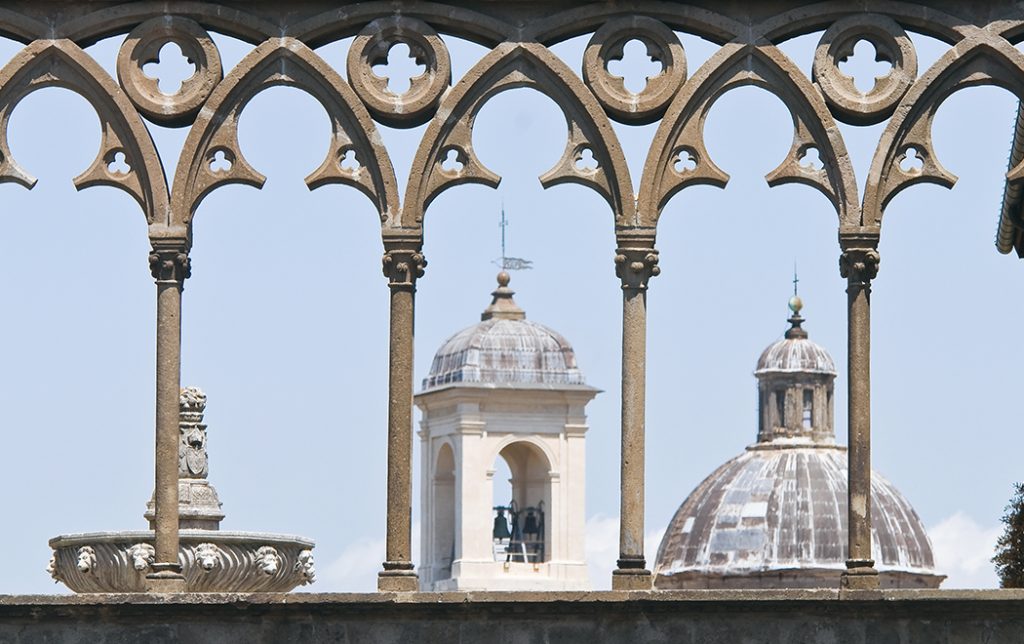
Viterbo
Viterbo, the city of Popes
Moving southwards to discover another volcanic lake, Lake Vico, we pass Viterbo, an unmissable place to visit. Viterbo was the seat of the papacy for 24 years, from 1257 to 1281, earning itself the name of City of Popes for this reason and it still bears traces of that splendor today despite its origins being even more ancient as it dates back to the Etruscan civilization.
Viterbo has one of the most important monumental structures in Lazio: aristocratic buildings, monuments that are rich in works of art, beautiful medieval quarters, churches and cloisters from various periods, slender towers and elegant fountains in peperino (the typical stone used for buildings in Viterbo).

Lake Vico
Lake Vico, the highest lake in Italy
Lake Vico is less than half an hour’s drive away. With an altitude of over 500 meters this is the highest of the Italian lakes and is located in the heart of the Cimini hills. Lake Vico is one of Lazio’s areas of particular naturalistic value and, for this reason it is a nature reserve and a protected area. Just a few kilometers to the east this landscape, which is almost completely uncontaminated by any settlements, offers a view of another world amidst the pomp of Italian history and art: Caprarola.
Caprarola, cradle of the Renaissance and hazelnut chocolate
A model of brilliant structural town planning, the work of the famous Renaissance architect Jacopo Barozzi, known as Vignola, that makes it of equal importance to Pienza in Tuscany and Palmanova in Friuli Venezia Giulia, in 1995 Caprarola was a subject of study at the UK’s Prince of Wales’ Institute of Architecture.
The town’s street network which is oriented along the axis of the ancient “Via dritta”, the town’s main road, culminates in the Main Square in front of Palazzo Farnese which, with its harmonious garden, represents one of the best examples of a Renaissance residence on which the best architects, sculptors and painters of the period worked.
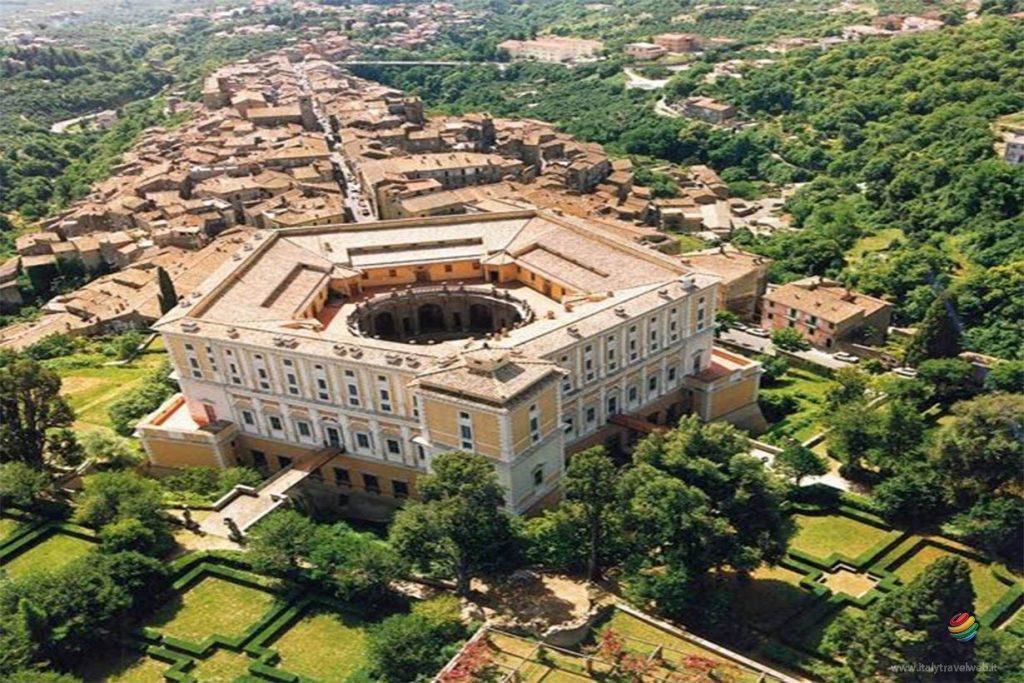
Caprarola, Palazzo Farnese
Discover the most beautiful villas in Lazio
Caprarola is also famous for its hazelnuts which are used to make traditional cakes – tozzetti, amaretti, pampepati – to which the spectacular festival held every year at the end of August is dedicated. The production of hazelnuts has led to the creation of a small craft industry that produces a Hazelnut Cream, similar to Nutella, but without any coloring or preservatives: it is called Nellina.
Sport and relaxation at Bracciano
Our journey to discover the volcanic lakes of Lazio ends with Lake Bracciano, halfway between Rome and Viterbo, where it is also possible to practice water sports thanks to the presence of the Bracciano-Martignano Natural Park which limits navigation to a very few motor boats. The park includes Lake Martignano which is also of volcanic origin and characterized by its small size and almost perfectly circular shape. The two lakes can call themselves “brothers” since they were generated by the same volcano.
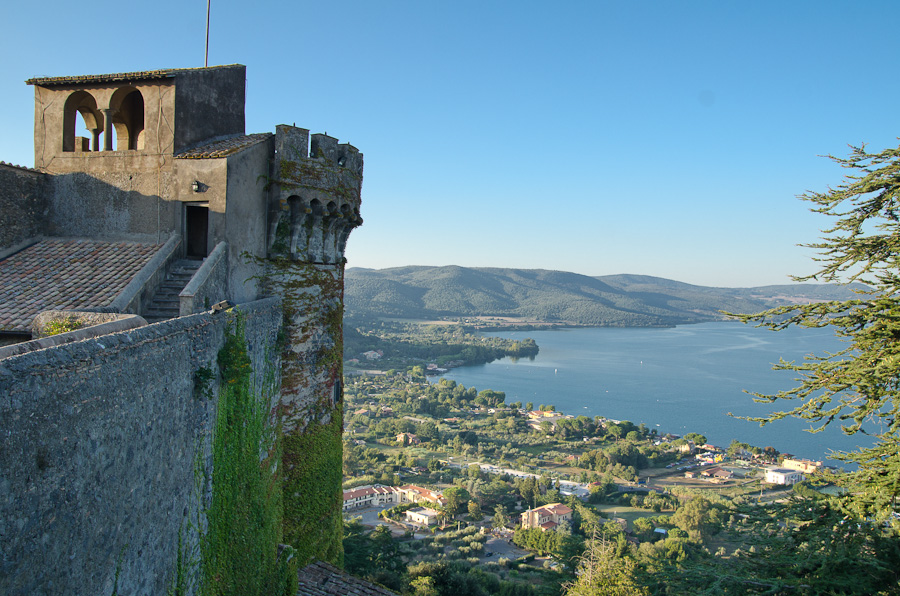
Lago di Bracciano
The Orsini-Odescalchi Castle is worthy of a wedding
Bracciano rises above the clear waters of the lake that bears the same name. It is best known for the Castello Orsini-Odescalchi. Within its fortified walls and austere towers, visitors are offered the extraordinary experience of a journey through four centuries of art and history, from the late Middle Ages to the end of the 19th century: evidence of this is contained in the exhibits preserved inside the Palazzo in a Museum which is open to the public, from the important picture gallery to the frescoes, to the furniture, to the collection of XVth and XVIIth century weapons and armor.

Castello Orsini-Odescalchi
The castle, first owned by the Orsini family then passed on to the Odescalchi princes who still own it today has, over the centuries, hosted pontiffs and sovereigns from Pope Sixtus IV della Rovere to Queen Christina of Sweden. Over its long history political events became intertwined with those of court life. One episode that still arouses great curiosity is the tale cloaked in legend of the unhappy love story between Duke Paolo Giordano I and his consort Isabella de’ Medici. The many couples (especially the famous ones) who come from all over the world to get married in the Castle do not seem to fear a similar outcome. One special event was the wedding of Tom Cruise and Katie Holmes which was celebrated in 2006.
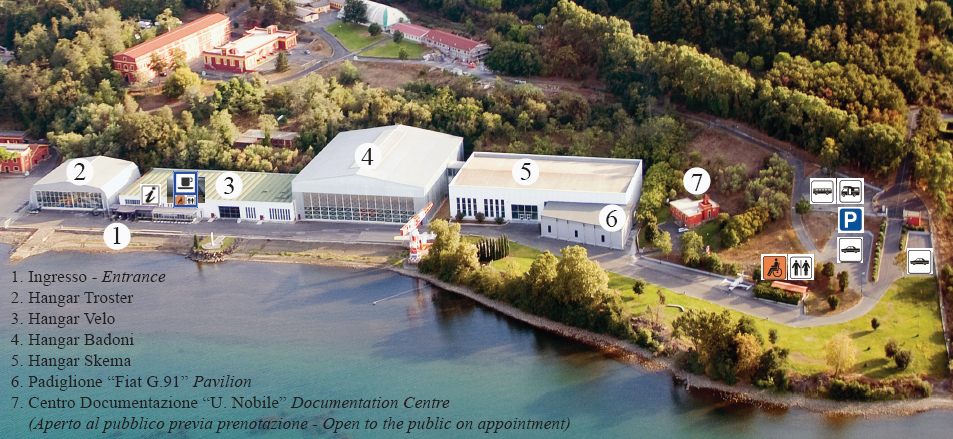
the Historic Italian Aeronautical Museum – Bracciano, at Vigna di Valle
Discover the most beautiful villas in Lazio
Flying is also history
Finally, a curious detail: a short distance from the historic center of Bracciano, at Vigna di Valle, on the banks of the lake, it is possible to visit the Historic Italian Aeronautical Museum, once an experimental Air Force center and today the home of the aircraft that have made the history of Italian aviation: the first Italian military airship was built and flown here in 1908.
Here we end our journey of discovery of the volcanic lakes of Lazio: ready to fly on to other places and other stories.






